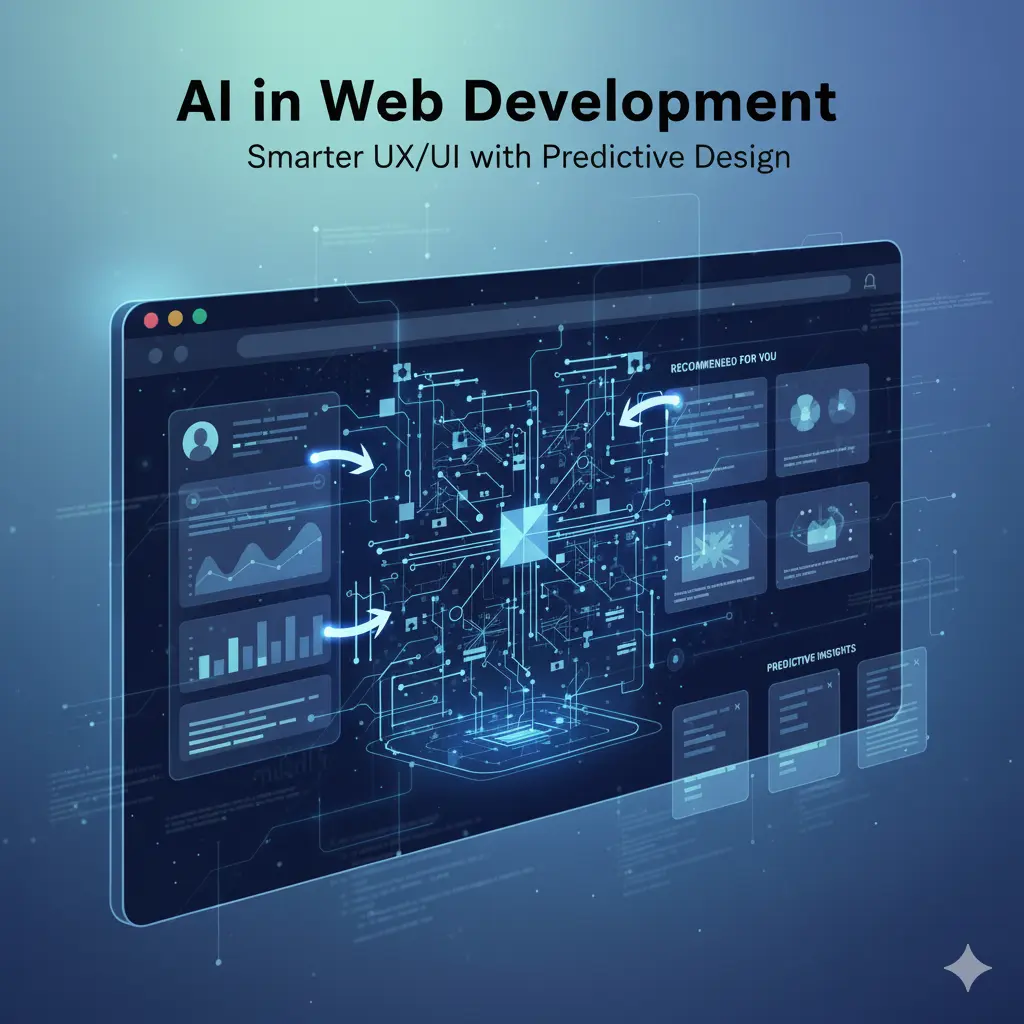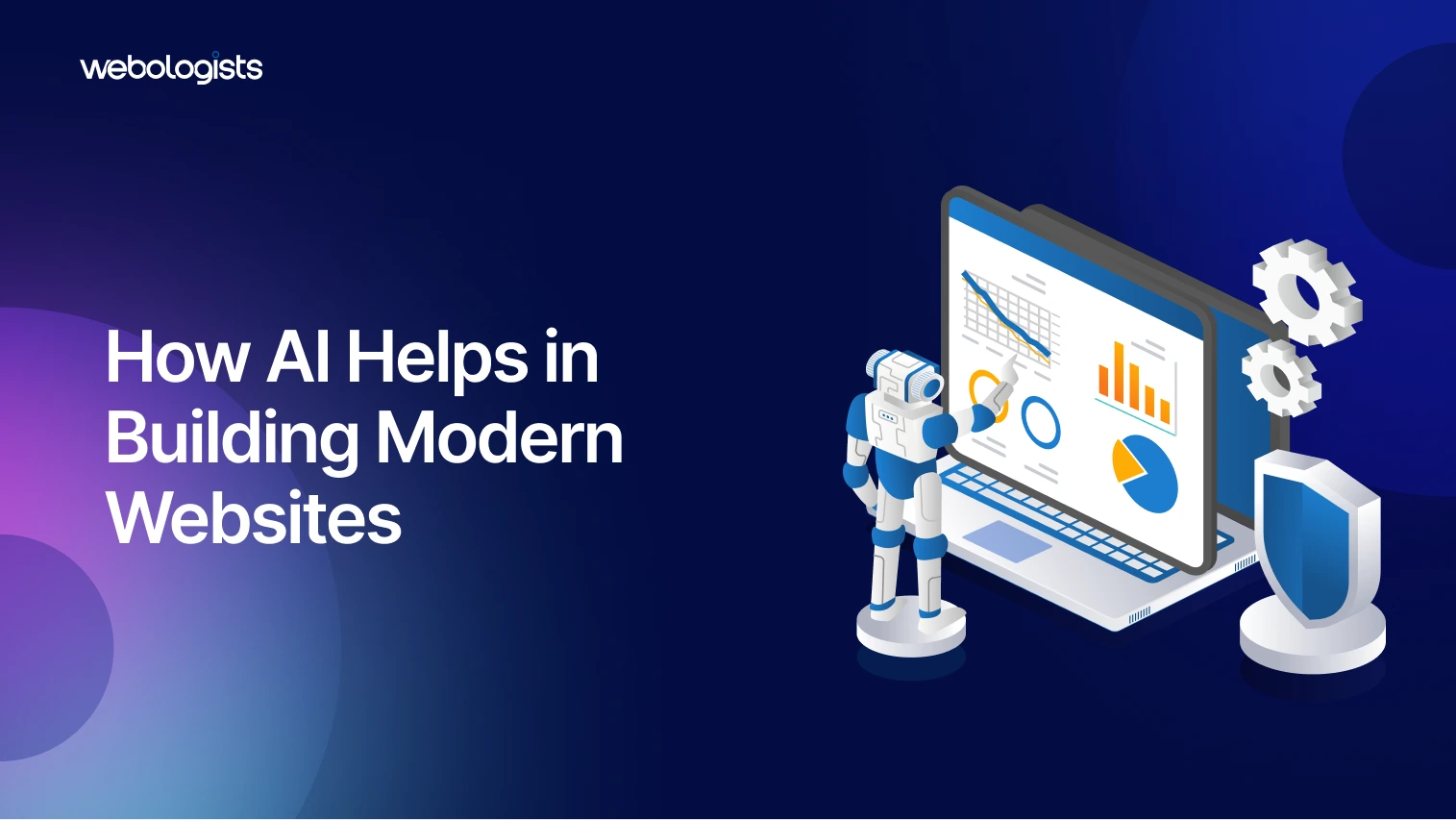
Table of Contents
- 1 Hello, Digital Future: AI’s Big Leap
- 2 Smart Design Arrives: How AI is Shaking Up UX
- 3 Building for Tomorrow: How AI is Remaking Web Development
- 4 AI in Action: What it’s Doing in Different Industries
- 5 The Road Ahead: Getting Your Digital Plan Ready for AI
- 6 Conclusion: Welcoming the Smart Digital Future
- 7 Time to Act!
Hello, Digital Future: AI’s Big Leap
Remember those old, static websites? The kind that just sat there, predictable and not really caring about what you needed. Well, we’re not living in that world anymore. We’re on the brink of a digital revolution, moving from simple clicking and viewing to smart, almost mind-reading online experiences. Artificial Intelligence (AI) isn’t just a trendy term; it’s the core reason why our digital world is changing so much. It’s pushing us past the usual ways we think about how websites look and feel (UX design), how they’re built (web development), and how we reach people online (digital marketing). We’re now in an age where everything is smart and always changing in real-time. From guessing what you’ll buy next to helping build entire pieces of software, AI isn’t some faraway dream, it’s happening right now, making our digital landscape lively, personal, and super effective.
Smart Design Arrives: How AI is Shaking Up UX
Back in the day, turning a blank page into a finished user interface meant weeks of careful, manual work, tons of back and forth, and endless design meetings. AI is completely flipping that script, helping designers create amazing things at super speed.
Making Design Fly: From Weeks to Just Days
The traditional design process, while thorough, often hit bumps in the road: drawing basic layouts by hand, creating the same old interface bits over and over, and slow cycles for changes. AI has really sped up these timelines, letting folks come up with ideas and make them happen fast.
I recall working with a mid-sized e-commerce startup. Our challenge was to quickly put together new features to keep up with market demands. Usually, designing the look and feel (UI/UX) for a single feature, from idea to the final pretty pictures, could easily take two to three weeks. But by bringing in AI UI generators, we cut that time down to just a few days. The AI could instantly whip up all sorts of different interface looks and easy-to-change layouts, not just for desktop but for mobile at the same time. This let our team explore many different user experience ideas at a speed we couldn’t have even dreamed of before.
Here’s a quick peek at the shift:
| Aspect | Old Way of UX Design | AI-Powered UX Design Process |
|---|---|---|
| Initial Concepts | Drawing by hand, few choices, slow to come up with ideas | Right away, you get tons of great-looking interface designs |
| Wireframing | Takes ages to draw basic layouts by hand | Flexible layouts (for computers & phones) generated in seconds |
| Iteration Speed | Weeks to make big changes, waiting on designers | Change things fast using AI chat, get instant feedback |
| Tool Integration | Tools don’t talk to each other, you move data yourself | Works smoothly with tools like Figma, Uizard, FigJam |
| Discovery | Lots of talking to users, careful question making | AI helps with smart questions, site maps, and diagrams |
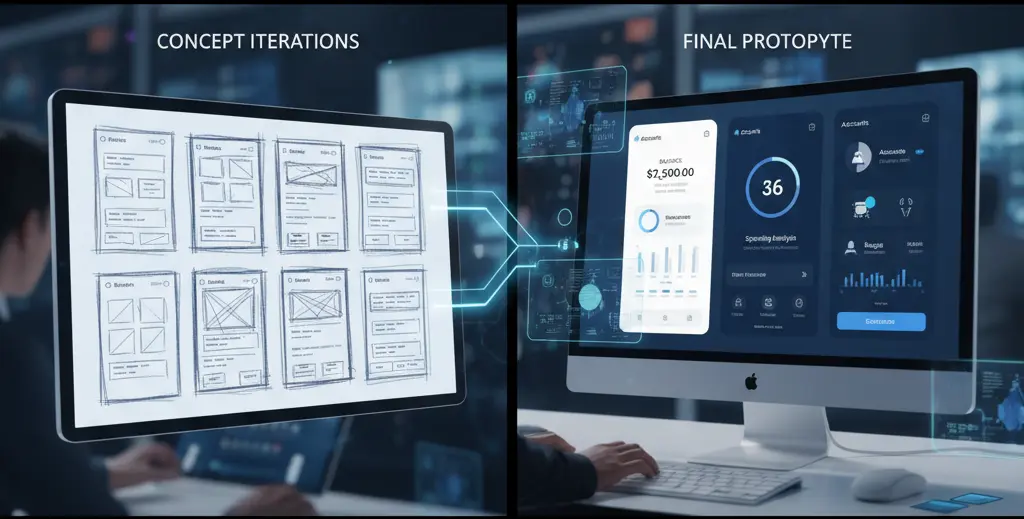
Tools like Uizard let designers turn simple sketches into sharp-looking mockups with AI. Plus, Figma’s newer AI features and connections with platforms like FigJam are making group thinking and drawing easier. Now, AI-powered chat lets designers simply tell it what changes they want, creating new screen paths or design versions in a flash. This doesn’t just speed up design; it frees designers to think about the big picture and really connect with users.
Getting Ahead: Predictive AI for Super Personal Journeys
The next big step in UX isn’t just reacting to what users do; it’s about knowing what they’ll do next. Predictive AI digs through huge amounts of info about user behavior, likes, and what’s going on around them to give them relevant content, help, or directions beforehand. It creates super personal journeys for every single user.
Just think about these cool examples:
- Online stores use AI to look at your browsing history, what you’ve bought, and even what people are saying on social media. They then offer early access to products or special discounts that are just right for you, even before you realize you want them.
- Streaming giants like Spotify and Netflix are masters of predictive AI. Spotify’s “Discover Weekly” puts together new music based on what you listen to, while Netflix’s “Because you watched…” suggestions keep you hooked. This really helps keep people around and happy. In fact, their smart systems account for a staggering 80% of what’s watched on the platform.
- Business software companies (B2B SaaS) use AI to check how you first interact with their platforms. If you spend a good amount of time on a specific feature’s pricing page, the AI can offer you a product comparison guide or set up a demo with an expert, helping you smoothly through the buying process.
The message is clear: A 2024 report from the UK Department for Science, Innovation and Technology shows that over 42% of British businesses are already using AI to connect with customers. What’s more, a Statista UK report reveals that 67% of online users now expect personalized experiences. This isn’t a bonus; it’s a basic thing people now expect, and predictive AI is just right to meet it. By understanding users before they even say what they want, businesses can build stronger connections, make loyalty run deeper, and make customers much happier.
Building for Tomorrow: How AI is Remaking Web Development
Making modern websites from fancy code systems to constant updates is a huge job. AI is showing up as a powerful helper, not to replace developers, but to give them more power and speed up the creation of strong, flexible, and safe digital experiences.
Smart Help & Getting More Done
AI tools are bringing in huge amounts of automatic help to the way we build things, changing how code is written, tested, and improved. The gains in getting things done aren’t just small steps; they’re game-changing.
Think about how this affects coding time. Tools like GitHub Copilot, an AI pair programmer, give you real-time code suggestions and create functions based on what you’re doing and your comments. People who started using it early on have reported up to a 50% reduction in coding time for certain tasks . This isn’t just about being fast; it’s about making it easier on their brains, letting developers focus on big picture design problems and fresh ways to solve things.
Large Language Models (LLMs), like the brains behind ChatGPT, are also proving super helpful. Developers are using them for:
- Writing Content: Automatically creating common code bits, how-to guides, and even blog posts for simple websites.
- Finding Bugs: Spotting tricky mistakes, suggesting fixes, and explaining confusing error messages.
- Making Code Better: Suggesting smarter ways to get things done or neater code structure for what’s already there.
And there’s more! AI-powered Quality Assurance (QA) tools are totally changing testing. They can do automated checks, spot things that don’t look right across different browsers and devices, and even guess where bugs might pop up based on code changes. This getting-ahead-of-problems approach really cuts down on issues after launch and ensures an easier time for users. Basically, AI makes the entire design-to-development workflow super smooth, helping teams work better together by doing repetitive tasks automatically and giving smart help at every stage.
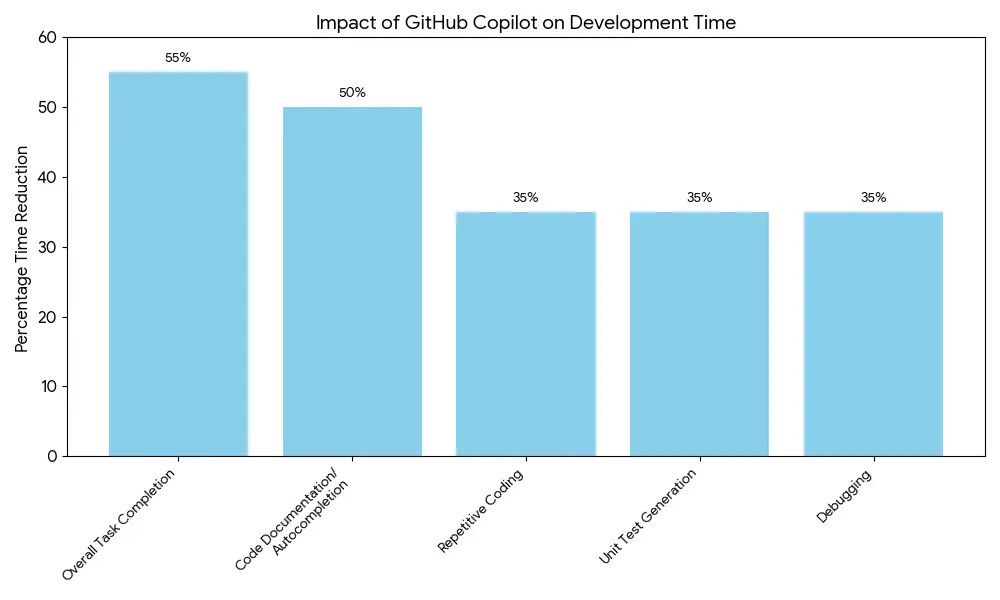
Changing Interfaces and Better Security
Beyond just being efficient, AI is making web interfaces smarter and tougher. The time of “one-size-fits-all” websites is quickly going away, replaced by experiences that change and get smarter with their users.
AI-driven real-time personalization goes beyond just static suggestions. It changes content layouts, navigation paths, and what you’re asked to do, based on what each user is doing, their location, device, and even how they might be feeling. This level of changing on the fly brings big wins for businesses. Reports show that businesses using AI-driven personalization see 20% increased customer engagement and a 30% jump in conversion rates. A perfect example is Amazon, whose legendary AI recommendation engine is credited with accounting for up to 35% of its total sales. This just goes to show how powerful interfaces are when they learn and get better in real-time.
Crucially, AI also plays a super important part in making security better. Smart monitoring systems use machine learning to detect weird stuff happening, pointing out possible scams or cyber threats much faster and more accurately than any person could alone. This includes spotting unusual login patterns, large transactions from new locations, or hidden signs of nasty software. Changing interfaces, powered by AI, learn from these security events, making themselves safer over time and providing a safer online space for everyone.
AI in Action: What it’s Doing in Different Industries
AI’s game-changing ability isn’t just for one area; it’s a supercharger for all sorts of businesses, making new things happen and getting more done across different fields.
Changing Key Sectors: From Online Shopping to Tech
- E-commerce:
- Personalized Suggestions: AI looks at past purchases, browsing, and wish lists to suggest just the right products, getting more sales and bigger orders.
- Changing Prices: Smart systems adjust prices on the spot based on demand, what competitors are doing, how much stock is left, and different types of customers, to get the most money.
- Smart Chatbots: Give customer support 24/7, answer common questions, help find products, and make buying things smoother.
- Finance:
- Spotting Scams: AI finds suspicious transaction patterns and odd things happening in real-time, really cutting down on money lost to crime.
- Smart Dashboards: Give personal money tips, budget ideas, and investment guidance based on how each person spends and their goals.
- Personal Money Advice: AI-driven robo-advisors offer investment plans made just for you and help with financial planning.
- Healthcare:
- AI-powered Check-ups: Helps doctors look at medical images (like X-rays, MRIs) for early disease detection with more spot-on results.
- Personal Patient Experiences: Digital helpers guide patients through appointments, medication reminders, and after-treatment care plans.
- Virtual Assistants: Help assess symptoms, answer health questions, and make it easier for patients and providers to talk.
- Real Estate:
- Virtual Property Tours: AI-made or enhanced virtual tours let potential buyers experience properties from afar, saving effort and money.
- Guessing Market Trends: Smart systems look at huge amounts of data (like old sales, local population info, economy stats) to guess future property prices and find good places to invest.
- Personalized Listings: AI matches buyers with properties based on what they really like, how they live, and even their social media activity.
- Tech:
- Automated Customer Help: AI-powered chatbots and digital agents handle common questions, letting human staff handle trickier problems.
- Smart Product Features: Putting AI inside apps and gadgets for things like voice recognition, predictive text, and smart home automation.
- Faster Development: As we talked about, AI tools make coding, finding bugs, and testing super quick, speeding up how fast products are developed.
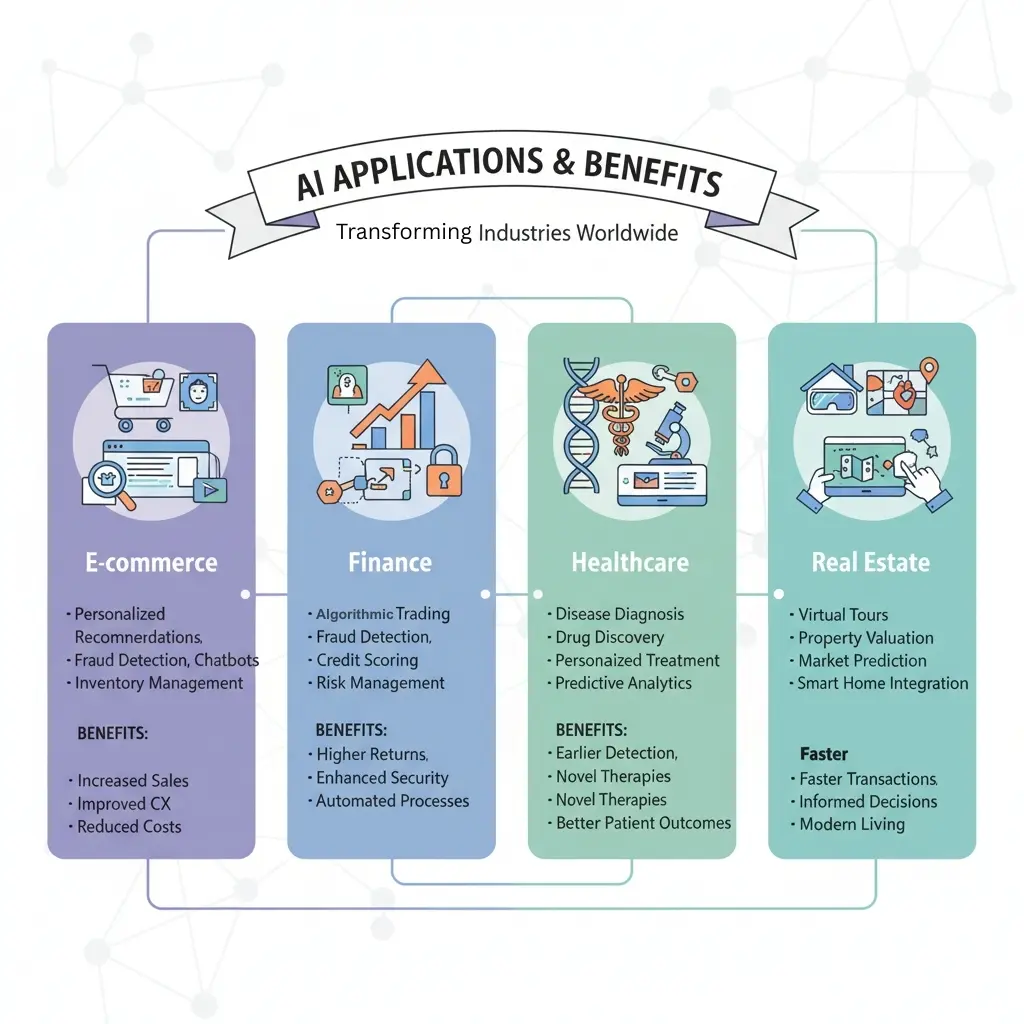
The Road Ahead: Getting Your Digital Plan Ready for AI
Bringing AI into your digital experiences isn’t just an option anymore; it’s a super important step. Businesses that welcome AI aren’t just making their current ways of working better, they’re actively making sure they’re ready for what’s next and setting themselves up for long-term success in a world that’s getting smarter all the time.
Real Wins for Business: Why You Can’t Skip AI
Adopting AI isn’t just about keeping up; it’s about seeing a whole lot of real good stuff that completely changes how businesses do. Here’s why AI is non-negotiable for modern digital strategies:
- Faster Digital Product Launches and Getting to Market: AI-powered design and development tools really slash the time it takes to get new products and features out there, giving businesses a really important leg up on the competition.
- Super Personal User Journeys: AI creates experiences that change for each person, making them happier, making things easier to think about, and building stronger, more meaningful connections.
- Better Business Performance: The direct result is clear: more happy customers, better sales, and, in the end, more money coming in from all your online spots. Since McKinsey thinks AI will bring in $4.4 trillion each year in boosted productivity, the financial benefits are huge.
- Smooth Design-to-Development Workflows: By doing repetitive tasks automatically and giving smart help, AI helps teams work better together and get more done, changing broken-up steps into smooth, quick ways of working.
- Puts Businesses at the Front of Innovation: Embracing AI shows they’re serious about meeting what users increasingly want and using smart automated tools for a smart upper hand, setting the best brands apart from the rest.
Conclusion: Welcoming the Smart Digital Future
Our digital world isn’t a still picture anymore; it’s a lively, always-changing world, constantly adapting and getting smarter. AI isn’t just a passing fad to watch; it’s the key, life-giving power behind all these changes. From speeding up the detailed work of UX design to smartly doing all the involved web development, and from making super personal user journeys to making online security strong, AI is creating platforms that are lively, ready for what’s next, and really, really good.
Embracing AI means building digital experiences that don’t just react to users, but just get them, guessing their needs and delivering value like no other. It means making things run smoother, bringing out new ways to be creative, and ultimately, driving business success never seen before. The smart digital future isn’t coming; it’s already here, and those who harness AI’s game-changing ability will undoubtedly lead the way.
Time to Act!
Ready to supercharge your digital plan with AI? Get in touch with us today for a chat about bringing AI into your UX, web development, and marketing efforts. Discover how smart automated tools and personalization can lift your brand and drive your business forward.
FAQs
-
How does AI specifically make the UX design process faster?
AI speeds up UX design by right away creating interface drafts, easy-to-change layouts, and design steps across all sorts of devices. It really cuts down on manual work, lets you try out tons of different ideas fast, and helps with making content and doing user research, making the usual design process much, much faster.
-
What are the main good things about predictive AI in digital marketing and user experience?
Predictive AI makes digital marketing and UX better by guessing what users want, giving them super personal content, and gently guiding them through their online experience. This leads to more happy customers, better sales, stronger customer loyalty, and an easier to use, more satisfying online experience.
-
Can AI truly help design and development teams work better together?
Yes, AI tools can absolutely help design and development teams work much better together. By writing code right from design pictures and making design changes happen fast, AI creates a much smoother and easier workflow for everyone. This means less confusion, quicker handovers, and ensures the design turns into working code exactly as planned.


